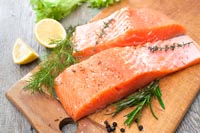There's no denying it, toxins are everywhere in the modern world, from the air we breathe and the water we drink and bathe in, to the foods we eat and even in the materials that make up the world around us. Foods are covered in pesticides or processed with unnatural chemicals and machinery. Chemical by-products from manufacturing and farm runoff infiltrate air and water. Oceans are polluted with heavy metals and mercury which pass up the food chain turning would-be healthy meals of seafood into poison. Dental fillings containing mercury turn every bite of food into a potentially poisonous hazard. And if that weren't enough, poisons such as fluoride, chlorine and low levels of heavy metals flow into your home through your water supply, all of which are approved by the government. Even pharmaceuticals, vaccines, hygiene, beauty, cleaning and packaging products contain a variety of toxic substances. Many of these toxins accumulate in the body and cannot be removed naturally.
Interestingly, modern diseases like cancer, auto-immune dysfunction, brain disorders like autism, Alzheimer's and Parkinson's, nerve disorders and more common ailments like depression, learning disabilities and fatigue may have a variety of connections to the buildup of toxins in our bodies. But no matter how healthy your existing diet and lifestyle may be today, this buildup of toxins from years past can continue to negatively impact your health. With this in mind, one of the best things you can do for your health is to set a plan for ridding your body of built up toxins. Here are 6 ways you can help decrease your toxic load and reduce toxin accumulation. Check in with Dr. Bossio for guidance in the best way to do this for you.
1. Sweat it out. Steam baths and saunas promote the release of toxins through sweating. For an even deeper detoxification you may want to consider infrared sauna treatments. Infrared saunas heat your body tissues several inches deep, enhancing your natural metabolic processes, circulation and helping oxygenate your tissues. Sweating will also help kill off viruses and other microbes. Repeated use of the sauna slowly restores the skin's ability to eliminate toxins, an action that often is inhibited by clothing, sun damage and sedentary lifestyles.
2. Burn fat, burn toxins. Toxins are stored at a much higher rate in the fat than in blood. So, it makes sense that in order to remove the most amount of toxins, you'll need to decrease fat as well. And of course, the best way to shed pounds of fat is through aerobic activity, meaning any activity that heightens both your heart and respiratory rates. Aerobic activity increases stamina and oxygen flow, tones the nervous system and strengthens the immune system. It also cleanses blood by stimulating circulation and sweating, and even releases endorphins making you feelhappier and more relaxed. Aerobic activities come in a variety of forms. Running, power-walking, cycling, swimming and even skiing are all aerobic activities. Better yet, you can have fun with your aerobic exercise and even include your kids and grandkids in the mix. Jump rope and double dutch games are excellent aerobic exercise for all ages, as are family dance parties and stair-climbing races. Always check with your doctor before beginning any new type of exercise regimen.
3. Milk thistle for liver health. Approved in 1986 for treating liver disease, today milk thistle is regularly used to treat illnesses related to toxic buildup of alcohol and acetaminophens. It boosts liver metabolism and helps repair liver cell damage from alcohol and other toxins. Discuss with Dr. Bossio how milk thistle might benefit you.
4. Target hard-to-remove heavy metals with chlorella. Chlorella is a powerful binding agent for heavy metals including mercury. This super green food can help remove a variety of toxins from the liver and other major organs and is safe enough to use daily or as a major week-long detox. A single-celled micro-algae, its molecular structure allows it to bond to metals, chemicals and some pesticides, while not binding to the minerals your body needs, like calcium, magnesium or zinc.
5. Eat a healthy, vitamin-rich diet with plenty of fiber. Clean, nutrient-dense foods provide endless health benefits, but even better, they also provide amazing detox abilities. Fiber offers a range of benefits, one being the discouragement of weight gain, helping control the development of fat, which could store more toxins. How much fiber? The average amount of fiber needed in the diet is 30 g (females) - 40 g (males) per day. The average intake today is 15 g or less!
6. Drink plenty of filtered water. Staying hydrated is extremely important when you're detoxifying your body. Filtered water is even more important because of the toxins that lurk in water supplies. Drinking more water will of course make you need to urinate more frequently, and that's exactly the point. Urinating is another way to expel toxins from your system.
Resources
Photo credit. Free Digital Photos.
http://www.freedigitalphotos.net/images/stamp-toxic-photo-p261778.
Foulkes, E. C. (1990). Biological effects of heavy metals. Boca Raton, FL: CRC Press.
Marz, R. B. (1999). Medical nutrition from Marz: (a textbook in clinical nutrition). Portland, Or: Omni-Press.
Vasey, C. (2009). The naturopathic way: How to detox, find quality nutrition, and restore your acid-alkaline balance. Rochester, Vt: Healing Arts Press.
Mills, S., & Bone, K. (2000). Principles and practice of phytotherapy: Modern herbal medicine. Edinburgh: Churchill Livingstone.
Gaby, A. (2011). Nutritional medicine. Concord, N.H: Fritz Perlberg Publishing.
Pizzorno, J. E., & Murray, M. T. (1999). Textbook of natural medicine. Edinburgh: Churchill Livingstone.
Ayres, J. G. 2010. Environmental medicine. London: Hodder Arnold.
Image Attribution: gepard/graphicleftovers.com




















